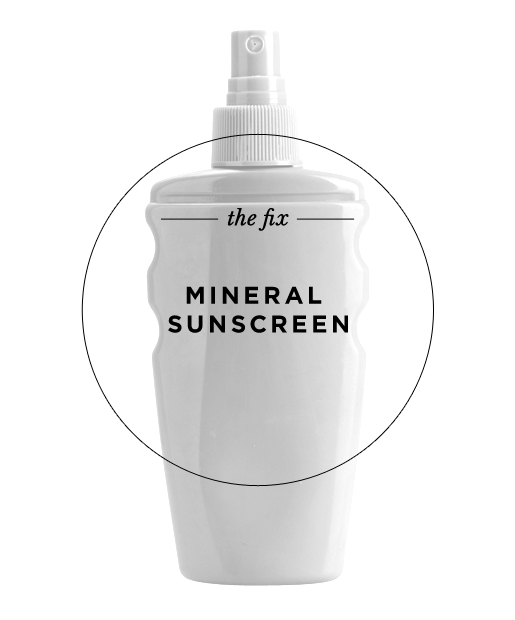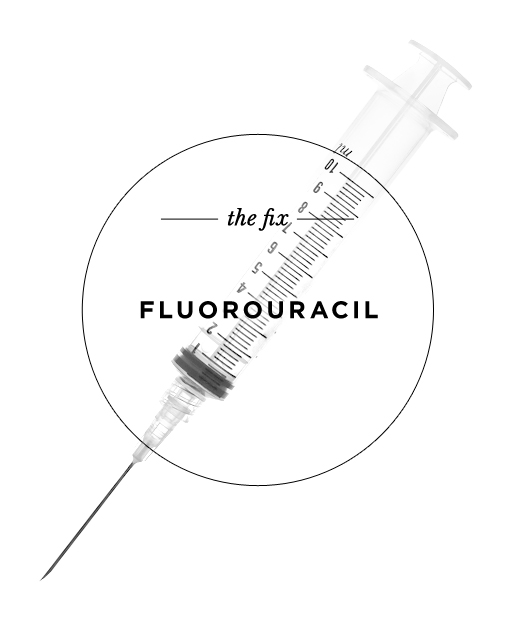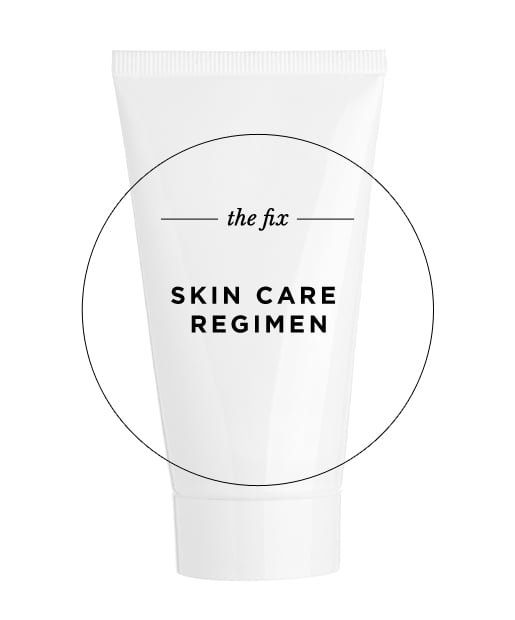Palm recommends avoiding any irritation to the skin if possible (no picking or scratching), but her No. 1 rule: Invest in a good sunscreen. "I always recommend patients to purchase a mineral based sunblock that has zinc [oxide] or titanium [dioxide] as the active sun ingredient." Most over-the-counter sunscreens skip mineral blocks in favor of ingredients that convert sunlight into heat energy when it hits the skin. Heat causes inflammation, which triggers hyperpigmentation. Physical mineral blocks, however, reflect sunlight from the skin so it doesn't penetrate the skin's surface.
Next up is establishing a brightening regimen. Palm recommends a series of salicylic acid peels or glycolic acid washes once a month to gradually fade post-acne scars in dark skin. Combination therapy -- topical products that combine lightening agents like hydroquinone and antioxidants like vitamin C -- are also helpful. For more severe cases, Palm suggests exploring in-office treatments. "I ... do a lot of work on ethnic skin with laser treatment in conjunction with topical treatments for age spots and scars," she says. Check with your doctor to ensure they use an Nd:YAG laser with a 1064 nanometer wavelength in the Q switched mode (the same low-energy mode used for laser tattoo removal).
Next up is establishing a brightening regimen. Palm recommends a series of salicylic acid peels or glycolic acid washes once a month to gradually fade post-acne scars in dark skin. Combination therapy -- topical products that combine lightening agents like hydroquinone and antioxidants like vitamin C -- are also helpful. For more severe cases, Palm suggests exploring in-office treatments. "I ... do a lot of work on ethnic skin with laser treatment in conjunction with topical treatments for age spots and scars," she says. Check with your doctor to ensure they use an Nd:YAG laser with a 1064 nanometer wavelength in the Q switched mode (the same low-energy mode used for laser tattoo removal).
"Keloids are abnormal scars in the wound-healing process that cause scar tissue to expand beyond the wound's edges," says Palm. You can easily spot keloids because they are raised and, unlike regular scars, tend to enlarge over time instead of gradually fading. Studies show that keloids are much more common in African American patients, but experts don't know why. "All we know for now is that it's a genetic predisposition and that it causes collagen to be laid down abnormally," Palm explains. Keloids typically form after surgery or injury, but even slight inflammation due to a pimple, a recent piercing or a burn can trigger keloids.
Because experts know this issue is genetic, Palm says that the best preventative method is to look at your family tree. "If you know you're at risk and you have relatives that suffer from keloid scars, avoid ear piercings or any type of disturbance to the chest -- the No. 1 area they can develop after earlobes," she says. If you feel any itchiness or noticed raised skin after any sort trauma, get to a dermatologist right away. "There are no truly effective over-the-counter treatments," Palm says, "but with early detection, your dermatologist will be able to start injection treatments with steroids to help stop the spread of scars."
When discussing treatment options with your derm, look into 5-fluorouracil, which is often used in colon cancer and skin cancer treatment. When combined with injectable steroid treatment, this option not only flattens out raised scars, it also reduces negative side effects in scar revision such as atrophy, or an over-thinning of the skin's tissues. If a scar worsens, radiation and laser treatment are options, "or they can be surgically removed" says Palm. However, keloids should be monitored after treatment, as they sometimes recur.
When discussing treatment options with your derm, look into 5-fluorouracil, which is often used in colon cancer and skin cancer treatment. When combined with injectable steroid treatment, this option not only flattens out raised scars, it also reduces negative side effects in scar revision such as atrophy, or an over-thinning of the skin's tissues. If a scar worsens, radiation and laser treatment are options, "or they can be surgically removed" says Palm. However, keloids should be monitored after treatment, as they sometimes recur.
According to the National Eczema Society, this itchy, irritating rash occurs twice as frequently in black skin than in light skin. The chronic dryness caused by eczema causes the creation of itchy cracks and splits in the skin, which eventually become an itchier red rash that often occurs inside elbows, behind the knees, on the neck, around the eyes and on the cheeks.
Similar to keloids, eczema is genetically inherited. Because symptoms of eczema can be harder to identify and diagnose in dark skin, it's often confused for psoriasis or fungal infections. According to Palm, one way to get proper diagnosis is by taking a look at the atopic triad: eczema, seasonal allergies and asthma. This trio of skin conditions tends to appear together and run in families. If you suspect you have eczema, inform your health care professional if you also suffer from allergies or asthma.
Similar to keloids, eczema is genetically inherited. Because symptoms of eczema can be harder to identify and diagnose in dark skin, it's often confused for psoriasis or fungal infections. According to Palm, one way to get proper diagnosis is by taking a look at the atopic triad: eczema, seasonal allergies and asthma. This trio of skin conditions tends to appear together and run in families. If you suspect you have eczema, inform your health care professional if you also suffer from allergies or asthma.
"With this condition, our job is to counsel people on eczema and get them on a really good and extremely moisturizing skin care regimen," says Palm. She recommends looking for products that contain ceramides, naturally occurring fats that are significantly lower in number in people who suffer from eczema. Products that contain ceramides will help soften skin and retain moisture. Your derm can prescribe topical steroids to quell flares or products with topical calcineurin inhibitors, nonsteriods that are great for treating sensitive areas like the face, around the eyes or near the genitalia. Over-the-counter oral antihistamines can help relieve itchiness.
Good old-fashioned petroleum jelly can help soothe eczema in a pinch. Another household ingredient that works surprisingly well? "Crisco!" says Palm. "Shortening actually has good moisturizing capabilities that really lock in moisture if you can't head to the store or your doctor." The only side effect is ... smelling like shortening.
Good old-fashioned petroleum jelly can help soothe eczema in a pinch. Another household ingredient that works surprisingly well? "Crisco!" says Palm. "Shortening actually has good moisturizing capabilities that really lock in moisture if you can't head to the store or your doctor." The only side effect is ... smelling like shortening.









